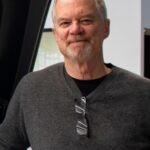I was dreading the next eight weeks. Multiple surgeries at the University of Michigan Cancer Center had finally rid me of most of the sarcoma cells whose discovery had so worried my family and completely upset my intense and demanding life as a Ford executive. But treatment wasn’t over yet, and I just knew the worst was yet to come – eight weeks of daily radiation treatments. In addition to normal treatment concerns, I envisioned forty very long days of searching for parking spaces, repeatedly filling out mind numbing forms, wasting away in crowded waiting rooms, inexplicable appointment delays and generally more frustration than Windows Vista.
But I couldn’t have been more wrong. My initial consultation put my mind at ease and I sailed through appointments experiencing a precise, efficient and ultimately successful treatment regimen that was patient focused and professional through every step. And this was no accident. It was the result of many months of lean work by Department Chair, Dr. Ted Lawrence, Director Kathy Lash and the rest of the Radiation Oncology team. Together they used value stream mapping to improve flow and significantly reduce lead times. Their teams used rigorous A3 problem solving leading to root cause-based countermeasures and powerful standards and checklists that helped to create a consistent, high-quality experience for each patient. And perhaps most importantly, they had leaders like Ted and Kathy who lived and consistently communicated patient-centered care from the patient’s first consultation to the department wide applause as patients ring The Bell celebrating the conclusion of their treatment regimen.
Following my cancer experience I had the privilege of participating on a team commissioned to further enhance the Center’s performance through a “patient centered care” initiative. Through this work we were able to support the dedicated professionals who worked tirelessly to find a “better way.” This experience allowed me to learn about all the great work going on more broadly in lean healthcare. But perhaps most importantly it enabled me to meet with other visionary health care leaders like Dr. Jack Billi, who gave the best advice possible to an engineer newly diagnosed with cancer (N=1) as well as incredibly talented administrators like Linda Larin, whose excellent book, Inspired to Change, is impacting the way medical professionals think about health care.
Additionally I learned that the very best health care organizations are thinking about how to be “lean” from the very start of facility and process design. Identifying how they can make step change improvement in patient-centered, health care performance through the application of LPPD principles and methods from concept development forward. In some cases, like Baris Lostuvali and Cathedral Hospital in San Francisco they are applying LPPD to the management of new facility construction. Others like University of Michigan, Akron Children’s Hospital, Stanford and Virginia Mason are going even further by involving both staff and patients through basic 3P techniques and designers in “seven ways” exercises up front in facility design and construction.
While much progress has been made, recent visits and discussion with health care professionals made clear, there is still tremendous opportunity. Rapidly changing technologies, new interventions, shifting demographics, and constraining regulatory requirements are combining to create an ever more challenging and dynamic operating environment for health care providers. An environment in which facilities designers, clinical designers and health care leaders will increasingly find themselves with significant product and process design challenges where the decisions they make may resonate for many years to come. One in which concepts, methods and tools from LPPD like improved design reviews, front loading, compatibility before completion (CbC), rapid learning cycles and the creation of new patient-centered value streams will be invaluable.
Will LPPD enable health care providers make the kind of dramatic improvements that it has done in other industries? I guess we’ll see. We intend to do the experiment. Because in addition to all the macro reasons that it is crucially important, in the end, healthcare is intensely personal.
I remain cancer-free, and my family and I are forever grateful to my surgeon Dr. Sybil Biermann, Dr. Ted Lawrence, Kathy Lash, Dr. Jack Billi, Dr. Kuzan and so many others at UMHS not only for their incredible professional skills, but for their willingness to explore, experiment and work to continually improve performance for the patients’ sake. And while my experience turned out well, remember here too that N=1. There is still so much more to do and the work is so important.






